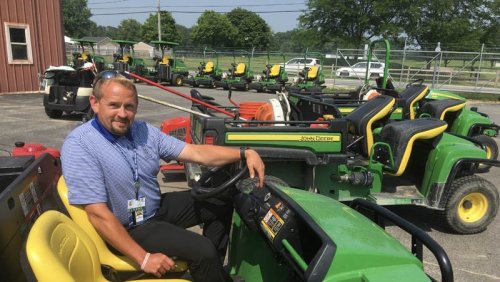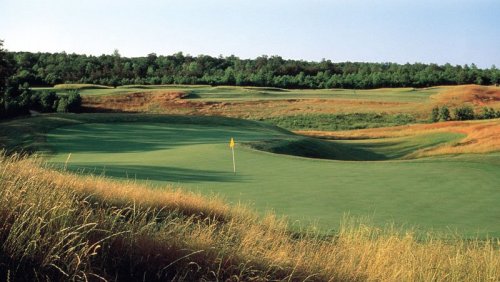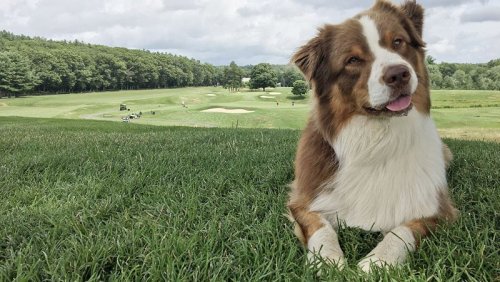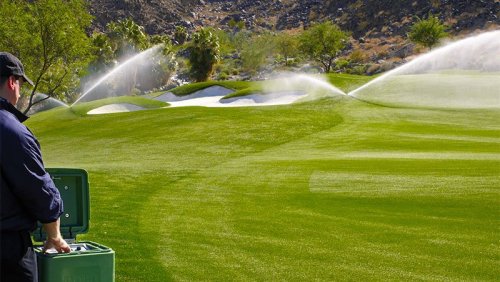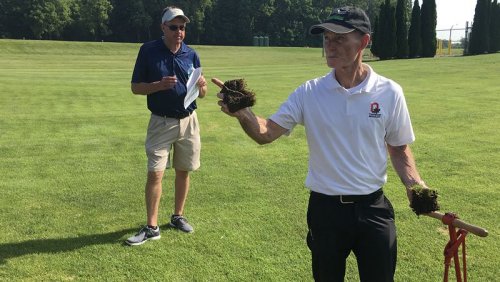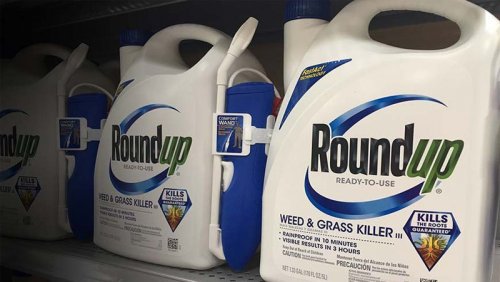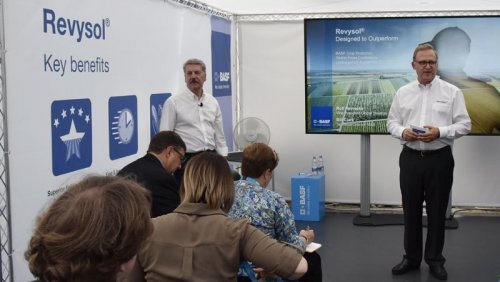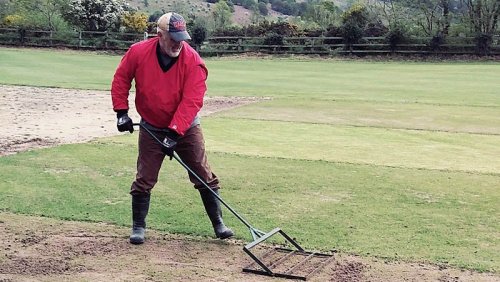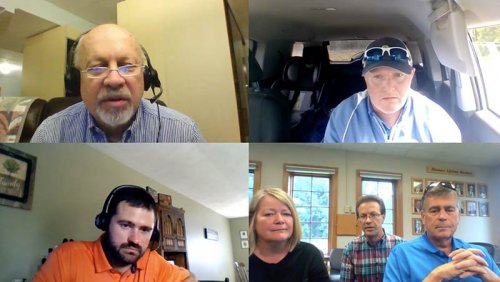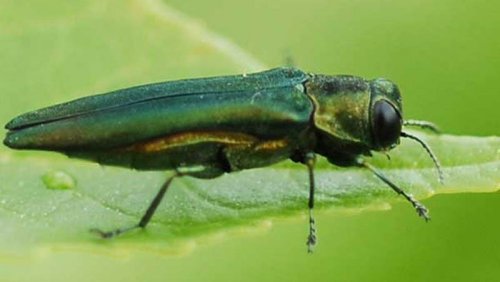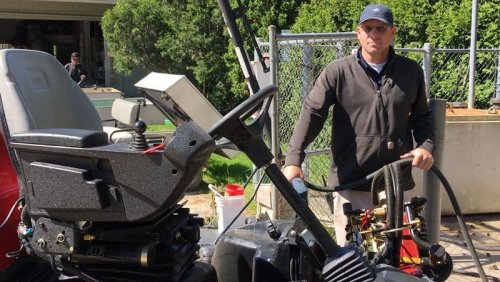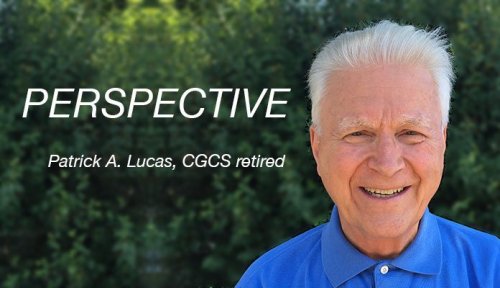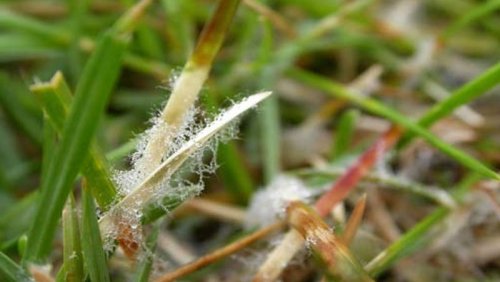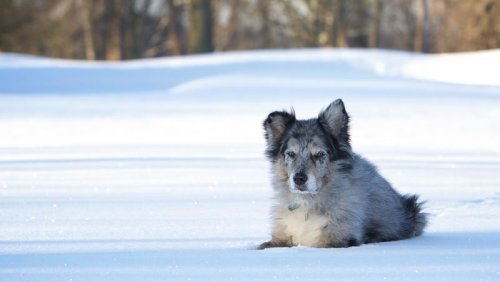
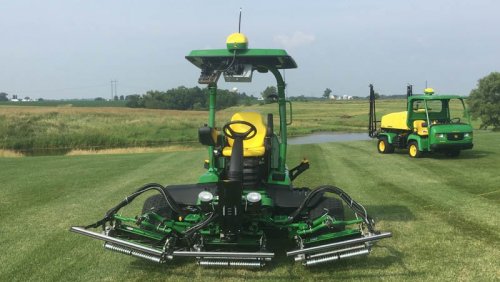
In America's heartland, seemingly every tractor and every harvester on every farm is green and yellow and covered in dust, serving as a reminder to the kind of hard-working spirit, grit and determination that is the very backbone of this country.
This week's PGA Tour event, the John Deere Classic at the TPC at Deere Run in Silvis, which was built two decades ago on land owned by an ancestor of John Deere himself, is a reminder of the company's devotion to the golf industry and a reminder to folks around here who earn a living feeding the rest of the country and the world that there is more to Deere than implements used in agriculture and construction.
Some of the company's recent innovations, and others that are not yet available in the golf market but soon will be, took center stage during a demo day in the run-up to this year's tournament - serving as a testament to where Deere came from, where the company is now and the path it is forging into the future.
That list included a Gator-mounted/GPS-guided sprayer, upgrades to Deere's triplex mower lineup, acquisition of a data-management platform and a demo of the much-awaited autonomous fairway mower.
Deere has partnered with Precision Makers, a Netherlands based company that specializes in autonomous technology for various equipment forms, to provide riderless mowing technology for the golf and sports turf markets.
Paired to a Deere 7500A, the brains of the riderless mower system is Deere's Starfire GPS receiver, which is the same system found on the GPS-guided sprayers.
Mapping the fairways is as quick as driving each fairway - twice for an inner and outer border. There is no limit as to how many fairways can be mapped, and updating routes after a renovation are as simple as driving each new fairway configuration.
"We're listening to what our customers are telling us they need," said Brooks Hastings, product manager for Deere.
From coast to coast, superintendents everywhere are plagued by labor shortages. At daily fee operations, a shortage of help could mean not filling fairway divots or raking bunkers. At private clubs, it could mean cutting out some detail work and even switching from walk mowing greens to triplex mowers.
Autonomous mowers could provide a solution to those struggling to meet their labor needs.
A crowd of onlookers comprised largely of superintendents and distributors agreed, judging by the audible gasps when the autonomous mower approached and made a couple of passes in front of the group.
"I'm very excited. I can't wait for this," said Dan Meersman of the Philadelphia Cricket Club, one of the many invited to the event. "Even in urban areas, it's so competitive. Everyone struggles to get enough help."
"This allows superintendents to reallocate labor to things they couldn't get accomplished before." Hastings said.
The system has been field tested at several sites. Demo opportunities will be announced next year. The company has not announced when the system will be available.
The riderless mower was just one example of how Deere is working to help superintendents work smarter while also overcoming some of the challenges they face in day-to-day management of the golf course, like labor shortages and the pressure to improve playability and provide consistent conditions.
GPS-guided spraying has been used in agriculture for several years, but is new to golf, which requires more precision due to unique challenges, such as multiple fairways with unique contours and irregularly occurring obstacles like bunkers and cart paths that vary in location and shape from one hole to the next.
Either the Pro Gator 2020A (34 hp gas engine) or Pro Gator 2030A (21 hp diesel) can be outfitted with the HD200 or HD300 spray systems.
Deere also used the demo day to introduce the latest additions to its triplex mower lineup. The all new 2700 and 2750 and 2700E and 2750E put more control in the hands of the superintendent and helps provide consistent quality of cut regardless of operator.
The programmable and password-protected TechControl system, superintendents can control frequency of clip, turn speed, clean up pass speed, and how fast the cutting units raise and lower.
The superintendent also can select Eco Mode, which electronically controls the engine speed to conserve fuel. With Eco Mode, the engine RPM automatically adjusts based on the load, saving as much as 30 percent on fuel and reducing operating sound levels for early morning mowing.
"Because of the consistency you can achieve," said Deere product manager Brad Aldridge, "you can take a rookie on your crew and make them look like a 20-year veteran."
During the demo on July 9, Deere also announced that it had acquired OnLink's cloud-based data-management platform.
OnLink is a cloud-based golf course management platform that helps superintendent collect data and manage equipment, labor, water, chemicals, nutrients and playing conditions. The acquisition includes the platform and all existing OnLink service contracts. During the transition, current OnLink customers will experience uninterrupted service, Deere officials said.
The OnLink system cloud-based, automated-reporting software provides critical course conditions, economic reports and equipment insights, helping superintendents make more informed management decisions. The system also offers precise and accurate weather forecasting service through a partnership with IBM's The Weather Company.
Likewise, the system allows superintendents and equipment managers to integrate their equipment fleet and manage and gather data, including maintenance scheduling and parts management. It also generates reports and can be used with all equipment manufacturers and vendor suppliers.
Critical to the success of so many new projects is Deere's Integrated Solutions sector that allows various segments of the company to utilize technology between business units.
"That allows us to leverage the research and development in other areas of the company," said Manny Gan, Deere's director of global sales and marketing. "We can take those elements and apply them to golf where they make sense."
- Read more...
- 3,893 views

